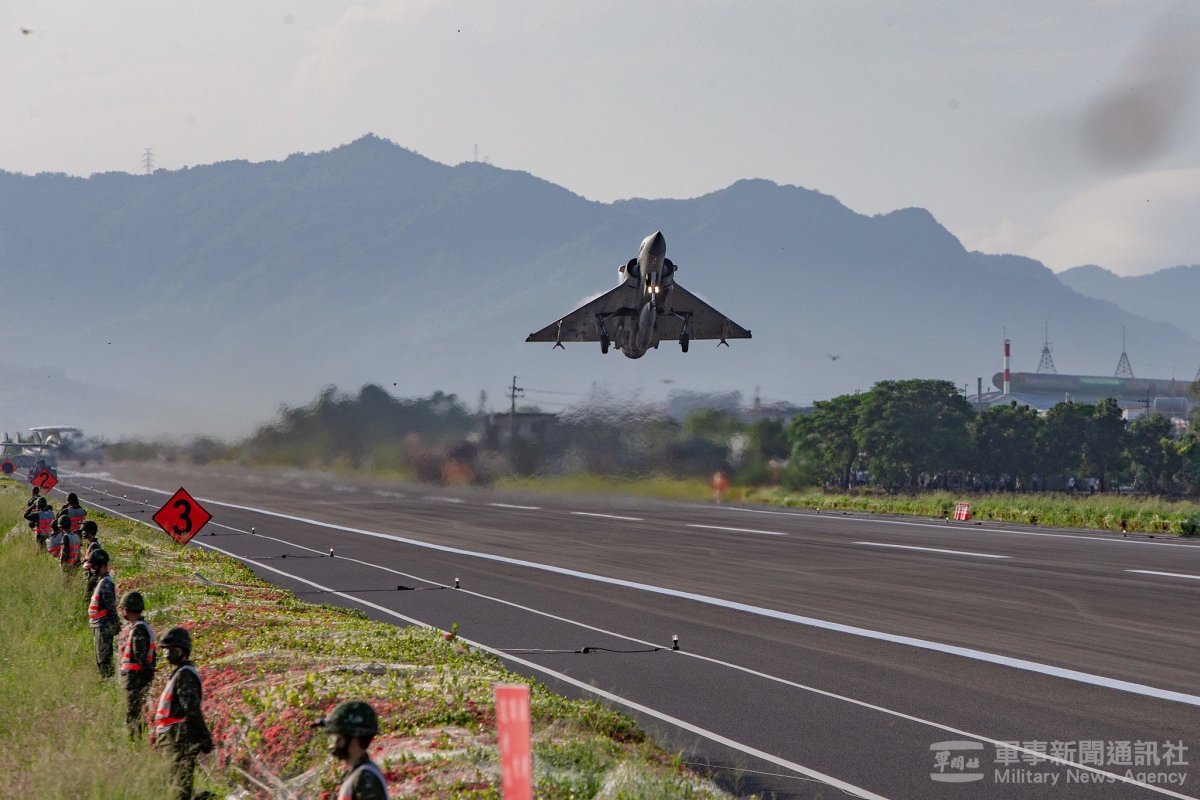Air traffic hobbyists in Taiwan intercepted radio challenges directed at approaching Chinese warplanes for the 10th day in a row on Tuesday, after regular activity returned to the skies around the island following a surge in confrontations at the beginning of October.
Global attention on Taiwan's air defense identification zone has faded since China's People's Liberation Army (PLA) flew 149 sorties into the southwest corner of the ADIZ in the first four days of the month, including a single-day record 56 flights on October 4.
But open-source intelligence (OSINT) enthusiasts, who rely on public plane- and ship-tracking websites to monitor military activity around the self-ruled island, are witnessing a return of the near-daily flights. These numbered an all-time high 180 sorties this month as of Tuesday, according to Taiwan's Defense Ministry
With these figures showing 702 total PLA sorties into Taiwan's ADIZ so far, 2021 is also the busiest year on record. For comparison, there were 380 such flights last year.
After the dramatic start to the month, followed by a period of relative quiet in which Taiwan's Defense Ministry detected just four Chinese planes in 11 days, Taipei has intercepted or engaged air defenses for approaching PLA aircraft on every day since October 16.
Early on Tuesday, a local OSINT outfit calling itself "Southwest Airspace of Taiwan" intercepted five radio challenges by Taiwan's Republic of China Air Force (ROCAF) directed at PLA warplanes, the latest at 10:51 a.m. Taipei time. The OSINT group comprises former service personnel from Taiwan's armed forces.
In the intercepted radio broadcast, an ROCAF operator can be heard challenging a Chinese military aircraft operating at 6,600 meters (21,654 feet) southwest of Taiwan. He warns the PLA plane it's "approaching our airspace and affecting aviation safety."
Since Taiwan began publishing data on the near-daily military flights last September, all PLA activity has been occurring in international airspace about 100 to 150 miles southwest of Taiwan. Despite overt threats by China's state media organs, no PLA jets have flown into the island's territorial airspace—a maneuver that would require military action on the part of Taiwan.
Crucial Waterway
The Chinese military training missions allow PLA pilots to familiarize themselves with a crucial waterway that connects the Western Pacific to the Taiwan Strait and the South China Sea. They also serve the purpose of intimidating the island's population and its democratically elected government, which considers Beijing the most urgent threat and prefers closer ties with the likes of the United States and Japan.
China, meanwhile, claims Taiwan is part of its territory despite having never governed it. Its most senior leadership, including Xi Jinping, has vowed to seize the island by force if necessary. Beijing has also made clear that its military flights are a signal to Taiwan's closest supporters to stay away.
By Taiwan's own assessments, China will have the means to mount a full-scale invasion with minimal losses by 2025, but a cross-strait conflict is not imminent. China's military buildup, which outgrows Taiwan's year-on-year, is an indication of capabilities, but not intent—China analysts believe Xi is not ready to take any risks that might damage his credibility in the near term.
Taiwan Strengthening Its Defenses
Meanwhile, Taiwan continues to use its time to bolster its own defenses. This month, cross-party deliberations began on an $8.5 billion special budget prosed by the country's Defense Ministry, which seeks extra funds to mass-produce anti-ship and land attack cruise missiles.
However, the PLA's frequent flights near Taiwan—described as "gray zone," or a deliberate measure short of war—pose non-traditional military challenges to the island. Taiwan's own jets, while advanced, face increasing wear and tear as they scramble to intercept the numerous Chinese planes at a cost of over $35,000 per hour in the sky, according to Taiwanese defense estimates.
Taipei previously said it would no longer dispatch jets to head off slow-moving aircraft from China, sending up reconnaissance planes instead. The government is also hoping for the prompt or expedited delivery of 66 F-16Vs, the sale of which was approved during the Trump administration in 2019.
Update 10/26/21 at 09:55 a.m. ET: This article has been updated with the latest figures from Taiwan's Ministry of National Defense.

Uncommon Knowledge
Newsweek is committed to challenging conventional wisdom and finding connections in the search for common ground.
Newsweek is committed to challenging conventional wisdom and finding connections in the search for common ground.
About the writer
John Feng is Newsweek's contributing editor for Asia based in Taichung, Taiwan. His focus is on East Asian politics. He ... Read more
To read how Newsweek uses AI as a newsroom tool, Click here.








